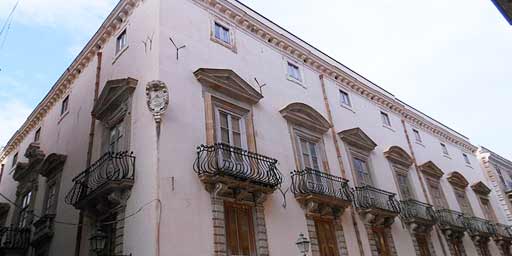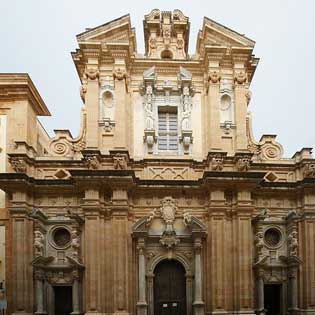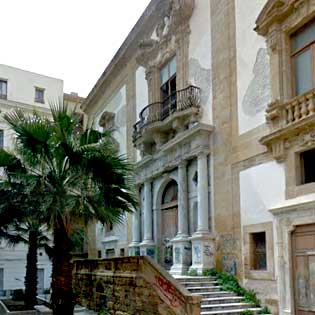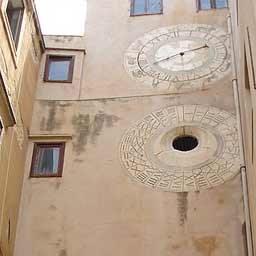Riccio Palace in Trapani
The Palazzo Riccio di Morana di Trapani , whose name comes from the couple who first chose it as their noble residence , is one of the most fascinating in the historic center.
The palace was built during the fifteenth century, modified in the sixteenth century on the rua Grande, with a typical Catalan-style portal, remodeled by the barons Rizzo of San Gioacchino and Arcodaci. The appearance of the patrician residence changed again in the seventeenth century, as evidenced by the important baroque balcony at the entrance, and in the eighteenth century. The late Baroque façade was impressed on the palace in the second half of the eighteenth century by the architect Andrea Giganti, to whom the series of richly decorated balconies on the main floor is attributed.
The façade shows three elevations limited by large ones. cornices, on which numerous windows and glass doors open onto the long balcony with gooseneck railing of the noble floor whose central window is framed by two statues depicting one wealth and the other nobility. Each of the stained glass windows on this floor also features other sculptural decorations on the chests of drawers. The tympanum on the third level frames the Riccio coat of arms, the attic edge is surmounted by 10 allegorical sculptures representing the virtues.
Crossing the imposing bronze door you reach an atrium covered by a cross vault decorated with the Barons Adragna d'Altavilla who bought the palace from the Venuti family in 1875. Beyond the entrance there is the courtyard with three porticoed sides, the highest floor has only one side portico. A large staircase with wrought iron balustrade leads to the noble floor. The floor is made up of a succession of staterooms. Of particular interest is the last hall which has a very precious floor of Trapani majolica and a Rococo-style ceiling with interweaving of floral garlands. On the walls there are several paintings depicting rural landscapes and Roman ruins belonging to the Neapolitan eighteenth-century school. The Apollo room, which opens onto via Garibaldi, reveals a vaulted ceiling decorated with stuccoes that frame a fresco depicting the chariot of Apollo, probably the work of La Bruna.



